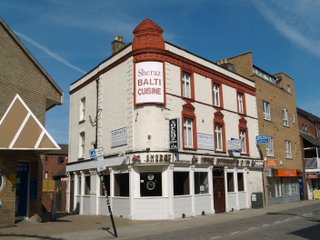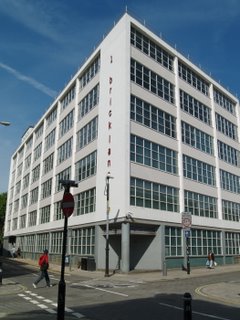Fire in the Docks
 On the night of Polly Nichols murder, two huge fires broke out in London's docklands. One of the fires occurred in the warehouse of Messrs Dible and Co, Engineers, at the dry dock in Shadwell, and as well as gutting the building damaged the rigging of a sailing vessel, the Connovia, which was under repair there at the time. The other fire broke out in a liquor warehouse in the South Quay of the Pool of London. A journalist for one of the newspapers of the day was crossing London Bridge at the time and described the scene.
On the night of Polly Nichols murder, two huge fires broke out in London's docklands. One of the fires occurred in the warehouse of Messrs Dible and Co, Engineers, at the dry dock in Shadwell, and as well as gutting the building damaged the rigging of a sailing vessel, the Connovia, which was under repair there at the time. The other fire broke out in a liquor warehouse in the South Quay of the Pool of London. A journalist for one of the newspapers of the day was crossing London Bridge at the time and described the scene.A more imposing spectacle than the fiery furnace seen from this structure I have not witnessed for a very long time. From out of the grim blackness of the well known pool leapt lurid flames of gigantic volume, rising high against a canopy of fantastic clouds and throwing the tapering masts into clear relief until they and their rigging looked like fairy cobwebs, illuminated by a strange, unearthly light. The effect was grand, and in the stillness of the morning, distinctly weird. From afar came the rumbling whirr of the hurrying engines and the muffled shouts of the lusty firemen as they battled bravely with a sea of relentless flame. As one waited and watched and saw the fire fiend leaping, as it were in triumph, until gradually it fell victim to overpowering forces, it gradually became evident that in a few short hours some hundreds of thousands of pounds worth of property had been sacrificed to the merciless enemy.
The photograph above is taken from London Bridge looking in the direction of where the fire would have been. Tower Bridge was still under construction at the time, and while the towers had been built, the connecting bridges had not. Beside it you can see Canary Wharf tower peeking over the top of the Tower Hotel, which obscures the approximate position at which the fire would have been.
For the poor folk of the East End there was not much by the way of entertainment to be had. If they could scrape the pennies together they could enjoy a drink at one of the many local beer houses, and there was always the Music Hall. But a good fire was a real draw, something the always gathered a crowd of spectators. One of these, at the Shadwell fire, was Emily Holland, who until just over a week earlier had been sharing a room with Polly Nichols at the Thrawl Street lodging house.
Following the fire she headed back there, and along the way became the last person, other than her killer, to see Polly alive.








